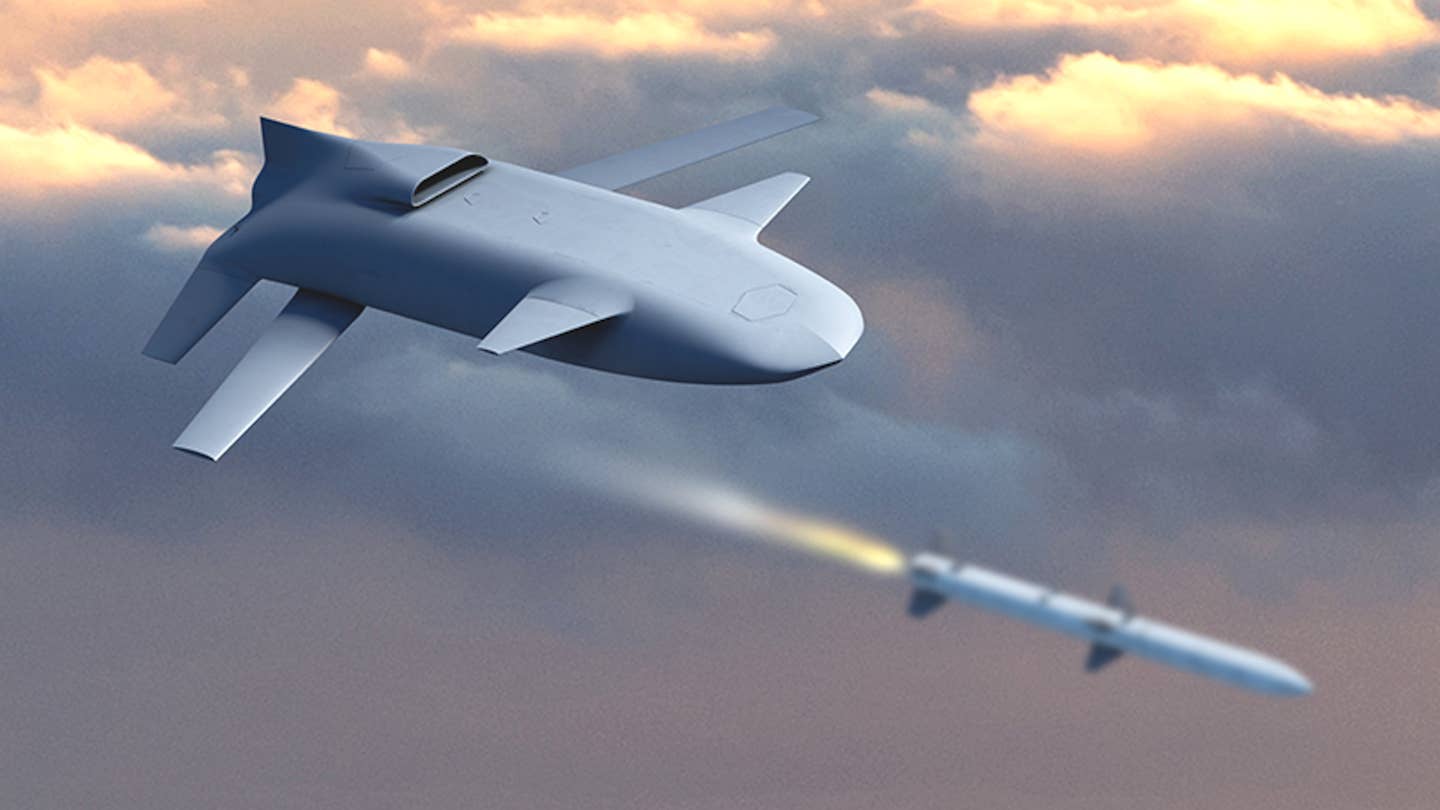The LongShot program is centered on developing an air-to-air missile-armed drone that fighters and bombers can launch and control.

The U.S. Defense Advanced Research Projects Agency has picked General Atomics to build an air-launchable uncrewed aircraft capable of firing air-to-air missiles as part of its LongShot program. General Atomics says that it hopes to begin flight testing this drone, which could give fighters and bombers new flexibility to engage aerial threats across longer distances, before the end of the year.
General Atomics Aeronautical Systems, Inc. (GA-ASI) revealed its selection as the sole awardee for the next phase of the LongShot program late this evening. The Defense Advanced Research Projects Agency announced that it awarded its first round of LongShot contracts to General Atomics, Lockheed Martin, and Northrop Grumman, back in 2021, but work on the project had actually begun the previous year.
“Begun in 2020, General Atomics was competitively awarded a contract to develop DARPA’s concept for disruptive air combat operations through demonstration of an air-to-air weapons capable air vehicle,” C. Mark Brinkley, GA-ASI’s Senior Director of Strategic Communications & Marketing, said in a statement. “The concept seeks to significantly increase engagement range and mission effectiveness of current 4th gen fighters and air-to-air missiles.”
“Over the last three years, GA-ASI has iterated on numerous vehicle designs to optimize performance and will begin flight testing in December 2023,” Brinkley added. “The testing will validate basic vehicle handling characteristics and lay the foundation for follow-on development and testing.”
New concept art that GA-ASI included with its announcement tonight, seen at the top of this story and below, shows a dramatically different design from one the company showed two years ago. The uncrewed aircraft in the new rendering has an elongated fuselage, small canards at the front, reverse-swept main wings toward the rear, and an inverted V-shaped twin-tail configuration. The main wings look to be designed to pop out after launch. It also has a small streamlined tail-like extension behind a top-mounted dorsal engineair intake and a chined nose.
GA-ASI
The LongShot design in the rendering that GA-ASI put out in 2021, seen below, had a completely different wing and tail arrangement, as well as a prominent chine around the center of its entire fuselage. It also had at least one clearly visible internal weapons bay.
The LongShot rendering that General Atomics released in 2021. GA-ASI
The new LongShot artist’s conception also has the drone firing an AIM-120 Advanced Medium Range Air-to-Air Missile (AMRAAM) – it’s not immediately clear whether the intention is now for the drone to carry missiles externally or in an internal bay as before – and a Boeing F-15 fighter in U.S. Air Force markings in the background.
A picture showing an F-15C belonging to the Oregon Air National Guard’s 142nd Fighter Wing with a Kratos UTAP-22 drone under its left wing. @tucson.plane.spotter
Additional details about General Atomics’ current LongShot drone design and DARPA’s plans for it are currently limited.
“The LongShot program is developing and flight demonstrating an air-launched Unmanned Aerial Vehicle (UAV) capable of engaging multiple adversary targets from standoff ranges using existing air-to-air missiles,” according to the entry for the program in the Pentagon’s 2024 Fiscal Year budget proposal, which was released in March. “LongShot will be deployed either externally from existing fighters or internally from existing bombers.”
“This system will capitalize on a slower speed, fuel efficient air vehicle for ingress, while retaining highly energetic air-to-air missiles for end-game target engagements, which provides several key benefits that increase weapon effectiveness,” it continues. “This program will address the stability and control challenges of launching air-to-air missiles from a relatively small UAV in an operational environment.”
The complete LongShot program entry in the Pentagon’s 2024 Fiscal Year budget proposal. DOD
DARPA is asking for just over $44 million to continue work on LongShot in Fiscal Year 2024, up from the $36 million it received in the previous fiscal cycle. Its stated goals for the coming fiscal year include completing the “fabrication of flight test vehicles and [then working to] integrate [them] onto host aircraft,” as well as conducting “captive carry testing of the flight test vehicle” and an “initial series of flight demonstrations validating separation of air-to-air missile from host flight test vehicle.”
DARPA says it could transition the LongShot program, or technology developed therein, to the U.S. Air Force and/or the Navy if it is completed successfully.
General Atomics is also on contract with the Air Force to demonstrate at least one variant of a different highly modular drone design based around a common ‘chassis,’ called Gambit, as part of another program called the Off-Board Sensing Station (OBSS).
General Atomics says it will have more to share about its LongShot design at the Air & Space Forces Association’s main annual conference and trade show in Washington, D.C. next week.
Contact the author: joe@thedrive.com



